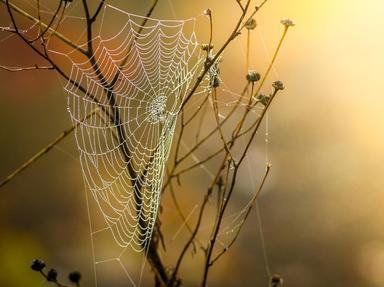
Eight Legs to Hold You Trivia Quiz
Arachnids are eight-legged invertebrates. Can you match each of these arachnids with a statement about them that does not apply to any of the others in the list?
A matching quiz
by looney_tunes.
Estimated time: 4 mins.
- Home
- »
- Quizzes
- »
- Animal Trivia
- »
- Invertebrates
- »
- Arachnids
